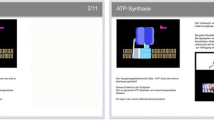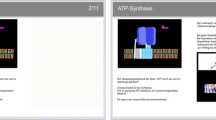Abstract
Psychophysiological responses have been studied as objective indicators for measuring a learner’s cognitive load. Previous studies have correlated pupil dilation or fixation length with increased cognitive load. Our aims were to confirm whether these findings could be applied in a general learning context and to verify the additivity hypothesis of cognitive load theory based on psychophysiological responses. Three responses (i.e., mean pupil diameter, area under the pupil response curve, and sum of fixation duration) were recorded while 94 participants completed a computer-based test. Participants were randomly assigned to low (n = 46) or high (n = 48) extraneous cognitive load conditions. Because the given test, which consisted of a low and a high task complexity problem, was the same for all participants, the difference in intrinsic cognitive load was compared as a within-subjects factor. Each psychophysiological indicator was calculated and compared under different intrinsic and extraneous cognitive load conditions. The results showed that psychophysiological responses significantly distinguished the differences in intrinsic and extraneous cognitive loads. In addition, the sum of the different types of cognitive loads corresponded to the total cognitive load. Based on the results, further studies are suggested to apply psychophysiological responses as the standard of judgment for different levels of cognitive load.





Similar content being viewed by others
References
Andreassi, J. L. (2010). Psychophysiology: Human behavior and physiological response (4th ed.). Mahwah, NJ: Erlbaum.
Beatty, J. (1982). Task-evoked pupillary responses, processing load, and the structure of processing resources. Psychological bulletin,91(2), 276.
Beatty, J., & Lucero-Wagoner, B. (2000). The pupillary system. In J. T. Cacioppo, L. G. Tassinary, & G. G. Berntson (Eds.), Handbook of psychophysiology (2nd ed., pp. 142–162). Cambride, MA: Cambridge University Press.
Becker, S.A., Cummins, M., Davis, A., Freeman, A., Glesinger Hall, C. & Ananthanarayanan, V. (2017). NMC horizon report: 2017 higher Education Edition. Austin, Texas: The New Media Consortium. Retrieved June 23, 2019, from https://www.learntechlib.org/p/174879/.
Blikstein, P., & Worsley, M. (2016). Multimodal learning analytics and education data mining: Using computational technologies to measure complex learning tasks. Journal of Learning Analytics,3(2), 220–238.
Bourisly, A. K. (2015). Pupil response diameter is modulated as a function of cognitive load during mental addition: A psychophysiological protocol and study. Journal of Advanced Neuroscience Research,2(1), 1–6.
Brunken, R., Plass, J. L., & Leutner, D. (2003). Direct measurement of cognitive load in multimedia learning. Educational Psychologist,38(1), 53–61.
Cook, A. E. (2009). Measurement of cognitive load during multimedia learning activities. In R. Z. Zheng (Ed.), Cognitive effects of multimedia learning (pp. 34–50). Hershey, PA: IGI Global.
Cook, A. E., Wei, W., & Preziosi, M. A. (2017). The use of ocular-motor measures in a convergent approach to studying cognitive load. In R. Z. Zheng (Ed.), Cognitive load measurement and application (pp. 112–128). New York: Routledge.
De Jong, T. (2010). Cognitive load theory, educational research, and instructional design: Some food for thought. Instructional science,38(2), 105–134.
Debue, N., & van De Leemput, C. (2014). What does germane load mean? An empirical contribution to the cognitive load theory. Frontiers in Psychology,5(1099), 1–12.
Dirican, A. C., & Göktürk, M. (2011). Psychophysiological measures of human cognitive states applied in human computer interaction. Procedia Computer Science,3, 1361–1367.
Hansen, A. L., Johnsen, B. H., & Thayer, J. F. (2003). Vagal influence on working memory and attention. International Journal of Psychophysiology,48(3), 263–274.
Hart, S. G., & Staveland, L. E. (1988). Development of NASA-TLX (Task Load Index): Results of empirical and theoretical research. In P. A. Hancock & N. Meshkati (Eds.), Human mental workload (pp. 139–183). Amsterdam: North-Holland.
Hess, E. H., & Polt, J. M. (1964). Pupil size in relation to mental activity during simple problem-solving. Science,143(3611), 1190–1192.
Hyönä, J., Tommola, J., & Alaja, A. M. (1995). Pupil dilation as a measure of processing load in simultaneous interpretation and other language tasks. The Quarterly Journal of Experimental Psychology,48(3), 598–612.
Iqbal, S. T., Zheng, X. S., & Bailey, B. P. (2004). Task evoked pupillary response to mental workload in human–computer interaction. In Proceedings of the ACM conference on Human Factors in Computing Systems (pp. 1477–1480).
Jainta, S., & Baccino, T. (2010). Analyzing the pupil response due to increased cognitive demand: An independent component analysis study. International Journal of Psychophysiology,77(1), 1–7.
Just, M. A., & Carpenter, P. A. (1993). The intensity dimension of thought: Pupillometric indices of sentence processing. Canadian Journal of Experimental Psychology/Revue Canadienne de Psychologie Expérimentale,47(2), 310.
Kahneman, D. (2011). Thinking, fast and slow. New York: Macmillan.
Kahneman, D., & Beatty, J. (1966). Pupil diameter and load on memory. Science,154(3756), 1583–1585.
Kalyuga, S. (2007). Expertise reversal effect and its implications for learner-tailored instruction. Educational psychology review,19(4), 509–539.
Kim, J., & Jo, I. (2019). Exploring the feasibility and use of psychophysiological responses based on cognitive load theory. Australasian Journal of Educational Technology,35(3), 150–165.
Kret, M. E., & Sjak-Shie, E. E. (2018). Preprocessing pupil size data: Guidelines and code. Behavior Research Methods,51(3), 1336–1342.
Landgraf, S., van der Meer, E., & Krueger, F. (2010). Cognitive resource allocation for neural activity underlying mathematical cognition: A multi-method study. ZDM,42(6), 579–590.
Leppink, J., & van den Heuvel, A. (2015). The evolution of cognitive load theory and its application to medical education. Perspectives on Medical Education,4(3), 119–127.
Olsen, A., Smolentzov, L., & Strandvall, T. (2010, September). Comparing different eye tracking cues when using the retrospective think aloud method in usability testing. In Proceedings of the 24th BCS Interaction Specialist Group Conference (pp. 45–53). British Computer Society.
Paas, F. (1992). Training strategies for attaining transfer of problem-solving skill in statistics: A cognitiveload approach. Journal of Educational Psychology,84(4), 429–434.
Paas, F., van Merriënboer, J., & Adam, J. (1994). Measurement of cognitive load in instructional research. Perceptual and motor skills,79(1), 419–430.
Paas, F., Tuovinen, J. E., Tabbers, H., & van Gerven, P. W. (2003a). Cognitive load measurement as a means to advance cognitive load theory. Educational Psychologist,38(1), 63–71.
Paas, F., Renkl, A., & Sweller, J. (2003b). Cognitive load theory and instructional design: Recent developments. Educational Psychologist,38, 1–4.
Paas, F., Renkl, A., & Sweller, J. (2004). Cognitive load theory: Instructional implications of the interaction between information structures and cognitive architecture. Instructional Science,32(1), 1–8.
Paas, F., van Gerven, P. W. M., & Wouters, P. (2007). Instructional efficiency of animation: Effects of interactivity through mental reconstruction of static key frames. Applied Cognitive Psychology,21, 783–793.
Plass, J. L., Moreno, R., & Brünken, R. (2010). Cognitive load theory. Cambridge: Cambridge University Press.
Schnotz, W., & Kürschner, C. (2007). A reconsideration of cognitive load theory. Educational Psychology Review,19(4), 469–508.
Schultheis, H., & Jameson, A. (2004, August). Assessing cognitive load in adaptive hypermedia systems: Physiological and behavioral methods. In International Conference on Adaptive Hypermedia and Adaptive Web-Based Systems (pp. 225–234). Springer, Berlin, Heidelberg.
Seufert, T., Jänen, I., & Brünken, R. (2007). The impact of intrinsic cognitive load on the effectiveness of graphical help for coherence formation. Computers in Human Behavior,23, 1055–1071.
Sibley, C., Coyne, J., & Baldwin, C. (2011, September). Pupil dilation as an index of learning. In Proceedings of the Human Factors and Ergonomics Society Annual Meeting (Vol. 55, No. 1, pp. 237–241). Los Angeles, CA: SAGE.
Slykhuis, D. A., Wiebe, E. N., & Annetta, L. A. (2005). Eye-tracking students' attention to powerpoint photographs in a science education setting. Journal of Science Education and Technology,14(5–6), 509–520.
Sweller, J. (2010). Element interactivity and intrinsic, extraneous, and germane cognitive load. Educational Psychology Review,22(2), 123–138.
Sweller, J. (2017). The role of independent measures of load in cognitive load theory. In R. Z. Zheng (Ed.), Cognitive load measurement and application (pp. 17–22). New York: Routledge.
Sweller, J., & Chandler, P. (1994). Why some material is difficult to learn. Cognition and instruction,12(3), 185–233.
Sweller, J., van Merrienboer, J., & Paas, F. (1998). Cognitive architecture and instructional design. Educational Psychology Review,10(3), 251–296.
Sweller, J., Ayres, P., & Kalyuga, S. (2011). Cognitive load theory. New York: Springer.
Szulewski, A., Fernando, S. M., Baylis, J., & Howes, D. (2014). Increasing pupil size is associated with increasing cognitive processing demands: A pilot study using a mobile eye-tracking device. Open Journal of Emergency Medicine,2(01), 8.
van Gerven, P., Paas, F. G., van Merriënboer, J., & Schmidt, H. (2002). Cognitive load theory and aging: Effects of worked examples on training efficiency. Learning and instruction,12(1), 87–105.
van Merrienboer, J. J., Kester, L., & Paas, F. (2006). Teaching complex rather than simple tasks: Balancing intrinsic and germane load to enhance transfer of learning. Applied Cognitive Psychology: The Official Journal of the Society for Applied Research in Memory and Cognition,20(3), 343–352.
Xie, B., & Salvendy, G. (2000). Prediction of mental workload in single and multiple tasks environments. International Journal of Cognitive Ergonomics,4(3), 213–242.
Zheng, R., & Cook, A. (2012). Solving complex problems: A convergent approach to cognitive load measurement. British Journal of Educational Technology,43(2), 233–246.
Funding
This work was supported by the Ministry of Education of the Republic of Korea and the National Research Foundation of Korea (NRF-2015S1A5B6036244).
Author information
Authors and Affiliations
Corresponding author
Additional information
Publisher's Note
Springer Nature remains neutral with regard to jurisdictional claims in published maps and institutional affiliations.
Rights and permissions
About this article
Cite this article
Jo, IH., Kim, J. Verification of Cognitive Load Theory with Psychophysiological Measures in Complex Problem-Solving. Asia-Pacific Edu Res 29, 417–429 (2020). https://doi.org/10.1007/s40299-019-00495-9
Published:
Issue Date:
DOI: https://doi.org/10.1007/s40299-019-00495-9




